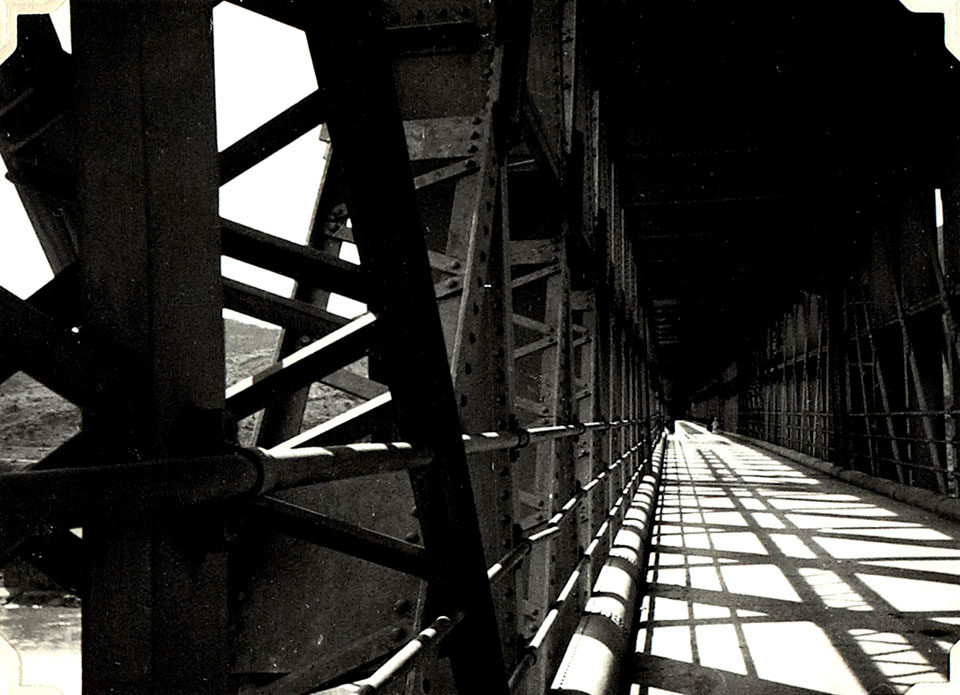
Online Collection
'Inside the roadway, Attock Bridge', 1937
Photograph, North West Frontier, India, 1937.
From a section of an album captioned, 'Attock on the Indus'.
The crossing of the River Indus at Attock, linking what are now the Pakistani provinces of Khyber Pakhtunkhwa and Punjab, is of vital strategic importance to anyone wishing to control the region.
Prior to the construction of this bridge ferries were used with a temporary bridge of boats constructed for Winter crossings. Proposals by Lieutenant William Arden Crommelin (1823-1886), for a suspension bridge and a tunnel were rejected in the 1850s.
A girder bridge design was finally settled on and construction took place between 1880 and 1883. The consultant engineer was Sir Guildford Molesworth (1828-1925) and the Chief Engineer was Francis Langford O'Callaghan (1839-1909), who also worked on designing the railway through the strategic Bolan Pass.
As this photograph shows, the structure was built to allow Punjab Northern State Railway traffic on the upper level and foot and other vehicle transport on the lower level. Between 1926 and 1929 the bridge underwent considerable redesign and redevelopment. With the construction of a new road bridge in 1979 the bridge became known as the 'Old Attock Bridge'.
In late 1936 there was growing agitation against British rule in Waziristan, led by the Waziri leader Ghazi Mirzali Khan Wazir, 'the Fakir of Ipi'. In response the British launched a military operation into the Khaisora Valley, hoping that a show of strength alone would suffice to reduce unrest. However, the two main columns of troops met stiff resistance and their supply lines were disrupted, forcing them to retire. The operation's failure triggered a wider insurrection and the ensuing guerrilla war drew in more British and Indian forces. Over 30,000 troops, together with aircraft and armoured cars, were deployed to the region. Violence subsided in late 1937 and after brief flare-ups in 1938 and 1939 the North West Frontier was relatively quiet until India became independent in 1947.
From an album of 347 photographs compiled by Captain (later Major) Wynne Howes-Roberts, 1st Battalion 13th Frontier Force Rifles, India and UK, 1936-1937.
NAM Accession Number
NAM. 1997-12-12-109
Copyright/Ownership
National Army Museum, Out of Copyright
Location
National Army Museum, Study collection
Object URL
https://collection.nam.ac.uk/detail.php?acc=1997-12-12-109

